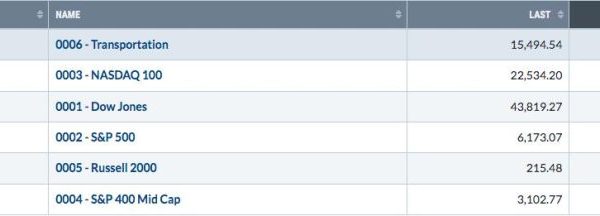Energy is the lifeline of global economic growth, today and into the future. While renewables are steadily gaining market share, oil and gas continue to dominate the energy sector.
Read on to learn more about what happened in the oil and gas market in 2023 and what’s expected for 2024.
How did oil prices perform in 2023?
As Russian President Vladimir Putin pushed his troops to war in Ukraine, supply-side uncertainty caused a significant spike in oil prices in 2022, reaching as high as US$120 per barrel in June of that year.
However, any expectations of a longer-term elevated price environment soon evaporated in 2023.
In the first half of the year, the specter of a looming global recession began to emerge, and bearish sentiment pervaded much of the oil and gas market. Oil prices traded between US$67 and US$83 during the period, while natural gas prices reached a 2023 low of under US$2.50 per million British thermal units in June.
Depressed pricing led to lower US production — according to Reuters, there were an average of 780 rigs drilling for oil and gas at the end of 2022, but the number had dipped to just 687 by June 2023.
Oil’s price performance in 2023.
Chart via Trading Economics.
Nuttall attributed this Q3 price spike to a “sharp contraction” in global oil inventories, which he said are at their lowest levels since at least 2017. “At the same time, you have (the Organization of the Petroleum Exporting Countries) that is very clearly in the driver’s seat, where they are balancing the market by withdrawing further exports,” he added.
In September, Saudi Arabia extended its voluntary crude oil production cut of 1 million barrels per day (bpd) through to December. At the same time, Russia said it planned to extend its 300,000 bpd export reduction until the end of the year.
Despite that news, and even with conflict breaking out in the Middle East between Israel and Hamas, oil prices returned to a downward trend in the fourth quarter of 2023, dipping below the US$70 mark.
“Volatility is feeding negativity to a point to today where you look at net speculative length, which is our measurement for optimism towards oil, we’re now almost at its lowest level in history,” commented Nuttall.
How did natural gas prices perform in 2023?
Volatility was a theme for natural gas in 2023 as well. As the International Energy Agency states in its Medium-term Gas Report 2023, ‘The energy crisis triggered by Russia’s invasion of Ukraine marked a turning point for global natural gas markets … While market tensions eased in the first three quarters of 2023, gas supplies remain relatively tight and prices continue to experience strong volatility, reflecting a fragile balance in global gas markets.’
In early November of last year, natural gas supply exceeded forecast demand heading into what was expected to be a milder winter season, which led to a more than 46 percent drop in prices.
Natural gas’ price performance in 2023.
Chart via Trading Economics.
‘High storage levels in the EU allow for cautious optimism ahead of the 2023-24 heating season,’ notes the International Energy Agency in its report. ‘However, a range of risk factors could easily renew market tensions. Northwest Europe will have no access this winter to two sources that used to be the backbone of its gas supply: Russian piped gas and the Groningen field in the Netherlands.’
Mild to wild winter conditions sent natural gas prices spiking again in mid-January 2024 as bitterly cold Arctic air led many in northern climates to crank their thermostats, while at the same time supply ‘sharply declined due to frozen wells caused by extreme cold,’ as per Trading Economics.
How will conflict in the Middle East impact oil and gas?
2024 is already underway, and volatility is still dominating the oil and gas narrative.
Despite this uncertainty, the US Energy Information Administration (EIA) expects Brent crude oil to average US$82 this year, the same average oil price experienced in 2023.
“Our forecast for relatively little price change is based on expectations that global supply and demand of petroleum liquids will be relatively balanced,” states the EIA in its Short-term Energy Outlook report, released on January 9.
Yet the EIA advises that its price forecast remains uncertain. One of the factors feeding into that uncertainty is “unplanned production disruptions, a risk highlighted by the recently escalating tensions in the Red Sea.’
What began in November 2023 as Houthi militia attacks on international commercial ships in response to the Israel-Hamas war has as of mid-January become a hot point in the ongoing cold war between the US and Iran.
Oil tankers are now steering clear of the Red Sea — one of the most important maritime trade routes in the world. This is not only increasing the cost of shipping oil products, but also resulting in delivery delays. Oil prices are already up as much as 2 percent in the first few weeks of the year, and tensions could cause further disruptions moving forward.
Since 2014, Saudi Arabia has been fighting Iran-backed Houthi rebels in Yemen. “Given most of the global spare oil production capacity is in Saudi Arabia, any damage to Saudi facilities could cause the market to experience a significant change in its view on geopolitical risk,” Golinowski continued. However, in his January 12 email he did emphasize that for now “the market appears to remain very unconcerned about geopolitical risk disrupting oil and gas supplies.”
At the 2024 edition of the World Economic Forum, which ran in Switzerland from January 15 to 19, Saudi Arabia’s foreign minister, Prince Faisal bin Farhan Al Saud, said a top priority for his nation is securing a ceasefire in Gaza, which his government views as the only way to end the Red Sea attacks, reported Reuters.
If the conflict in the Middle East spreads in the region, Golinowski said Saudi-led OPEC could be faced with a situation whereby it must react if one or more of its member producers become involved or targeted.
OPEC to play an outsized role in 2024
A much larger factor influencing the market this year will be OPEC’s commitments to continuing production cuts.
In November, OPEC members signed an agreement to lower crude oil production targets by an additional 2.2 million bpd through March 2024 in response to weaker crude oil prices. “These cuts are in addition to the existing voluntary cuts and lower production targets set at its June 2023 meeting,” according to EIA analysts.
The EIA is forecasting that crude oil production out of OPEC and its partners (OPEC+) will average 36.4 million bpd in 2024, which is less than the 40.2 million bpd average over five year period preceding the COVID-19 pandemic. At the same, the agency expects to see a slowdown in non-OPEC+ production growth — after a 2.5 million bpd increase in 2023, it’s expecting growth of only 1.1 million bpd in 2024. The decrease is seen stemming from slower growth in US oil output — production rose by 1.6 million bpd in 2023, but is set to increase by only 0.4 million bpd in 2024.
As for global oil consumption, EIA is projecting an increase of 1.4 million bpd in 2024, slightly lower than the 10 year pre-pandemic average. One of the factors decreasing demand for oil moving forward is anticipated to be the growing adoption of renewable energy technologies in the transportation sector. The agency notes, “We expect continued adoption of (electric vehicle) and hybrid vehicles will displace some motor gasoline consumption.”
Looking over to natural gas, the EIA is forecasting that the Henry Hub spot price will average between US$2.60 and US$2.70 in 2024, up by about 10 cents over the levels seen in 2023. “Record natural gas production and storage inventories that remain above the 2019-2023 average mean that natural gas prices in our forecast are less than half the relatively high annual average price in 2022,” states the agency.
Opportunities in oil and gas stocks
Against that backdrop, where should investors look for opportunities in the oil and gas market?
Many analysts are eyeing Canadian oil and gas stocks given the forthcoming startup of activities at the Trans Mountain pipeline expansion and the Coastal GasLink project in Western Canada.
“Oil and gas producers in Canada represent compelling value with new oil pipeline and LNG infrastructure coming online to support production volume growth in 2024 and 2025,” said Carbon Infrastructure Partners’ Golinowski.
For his part, Ninepoint Partners’ Nuttall favors Canadian mid-cap oil companies. “That’s where you’re finding the most profound value,” he said. ‘We remain convinced that there remains an unbelievable opportunity in these names, especially with sentiment now at almost historic lows. We go through these bouts … unfortunately this sector is volatile. To compensate you for that volatility we still see very meaningful upside in these names. And we remain bullish.’
Securities Disclosure: I, Melissa Pistilli, hold no direct investment interest in any company mentioned in this article.





























